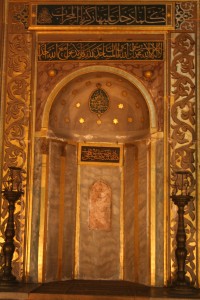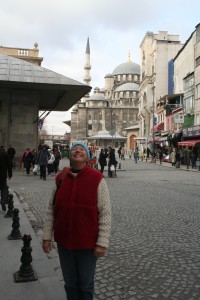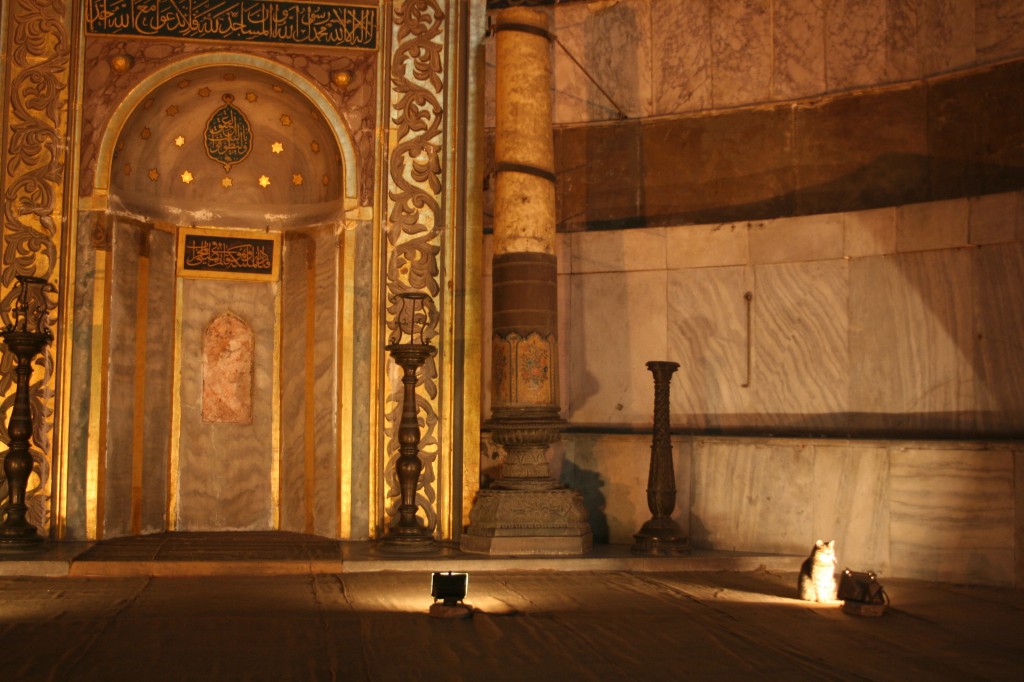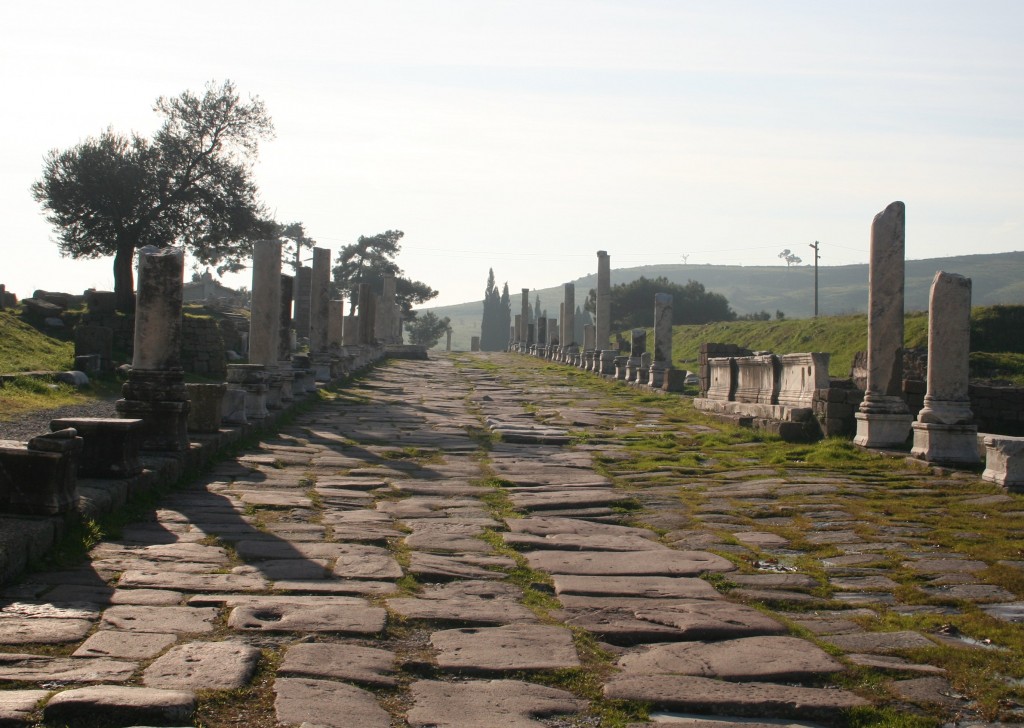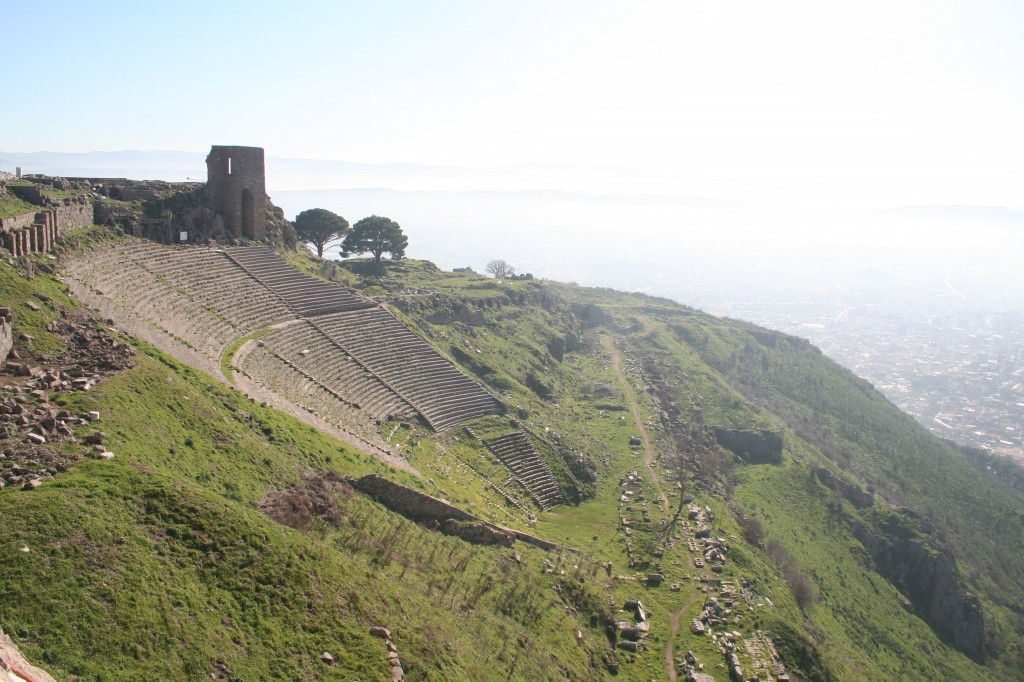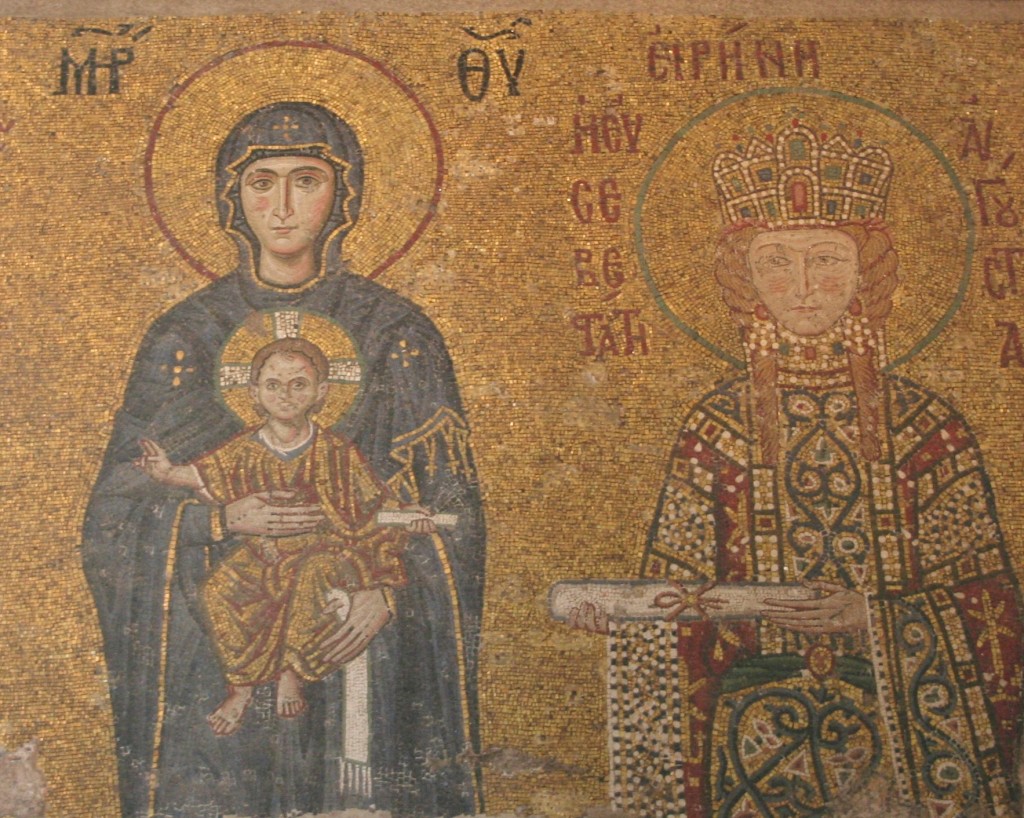
I wrote yesterday that my memory of Hagia Sophia is suffused with the glow of burnished gold. Looking back, there were two spots where that luminescence seemed brightest. The first is the mosaic pictured above. I have become fascinated by these Byzantine mosaics, which are made of tiny pieces of colored glass, pottery, or stone. They have a rippling, alive quality, one that changes the mosaic’s mood and character as the light shifts across their surface. I can only imagine how they must have appeared when lit by flickering candles and lamps.
The dominant color of the mosaics in Hagia Sophia is gold–rich, mellow tones that are covered with a patina of age but which still shimmer. And look at the expressions on the faces of these women. They have a certain stiff formality, but there is also individual character portrayed in their features. You can tell that St. Irene is a blonde Northern European, can you not? And those elaborately embroidered robes! Byzantine dressmakers had a love for color and style, certainly. As both a saint and an empress, Irene clearly had the pick of the closet.
There is something else I love about this mosaic: look at what St. Irene is holding. Judith Herrin, writing in Byzantium: The Surprising Life of a Medieval Empire, says that important women like St. Irene were often shown with scrolls in their hands: “Imperial and high-ranking women in Byzantium were normally well-educated as well as influential…respect and admiration for learning is a defining feature of the empire’s culture.” So here we see two powerful, beautiful, and wise women, objects for veneration in this most important of churches.
The Virgin Mary’s image is found throughout Hagia Sophia, for she played a central role in the religious life of the city both as the Mother of God and as the protector of Constantinople. When the city was attacked by invaders from the East in 626, icons were taken in a procession around its walls as a way of invoking divine assistance. As the siege worsened, eyewitnesses said they observed a woman leading the defense, a figure identified as the Virgin Mary. While the city had already claimed the title of Theotokoupolis, the city of the Mother of God, the tale cemented its truth.
But mosaics don’t provide the only golden beauty in Hagia Sophia. Below you can see the building’s mihrab, the niche that indicates the direction of Mecca. It is located in the same area as where the Christian altar once stood, though slightly off-center. Such an interesting contrast it provides to the Christian mosaics! Islam prohibits human imagery in its houses of worship, and so when Hagia Sophia became a mosque its icons and mosaics were either destroyed or covered. But beauty can come in many forms, and the calligraphy from the Koran that adorns this place is exquisite–graceful, elegant, and flowing, truly an indication of the holiness of the words. This mihrab, like the mosaic above, radiates a sense of spirit.
Two ways of reflecting the divine, both luminescent with beauty. Tell me: is there any place in the world like Hagia Sophia?
